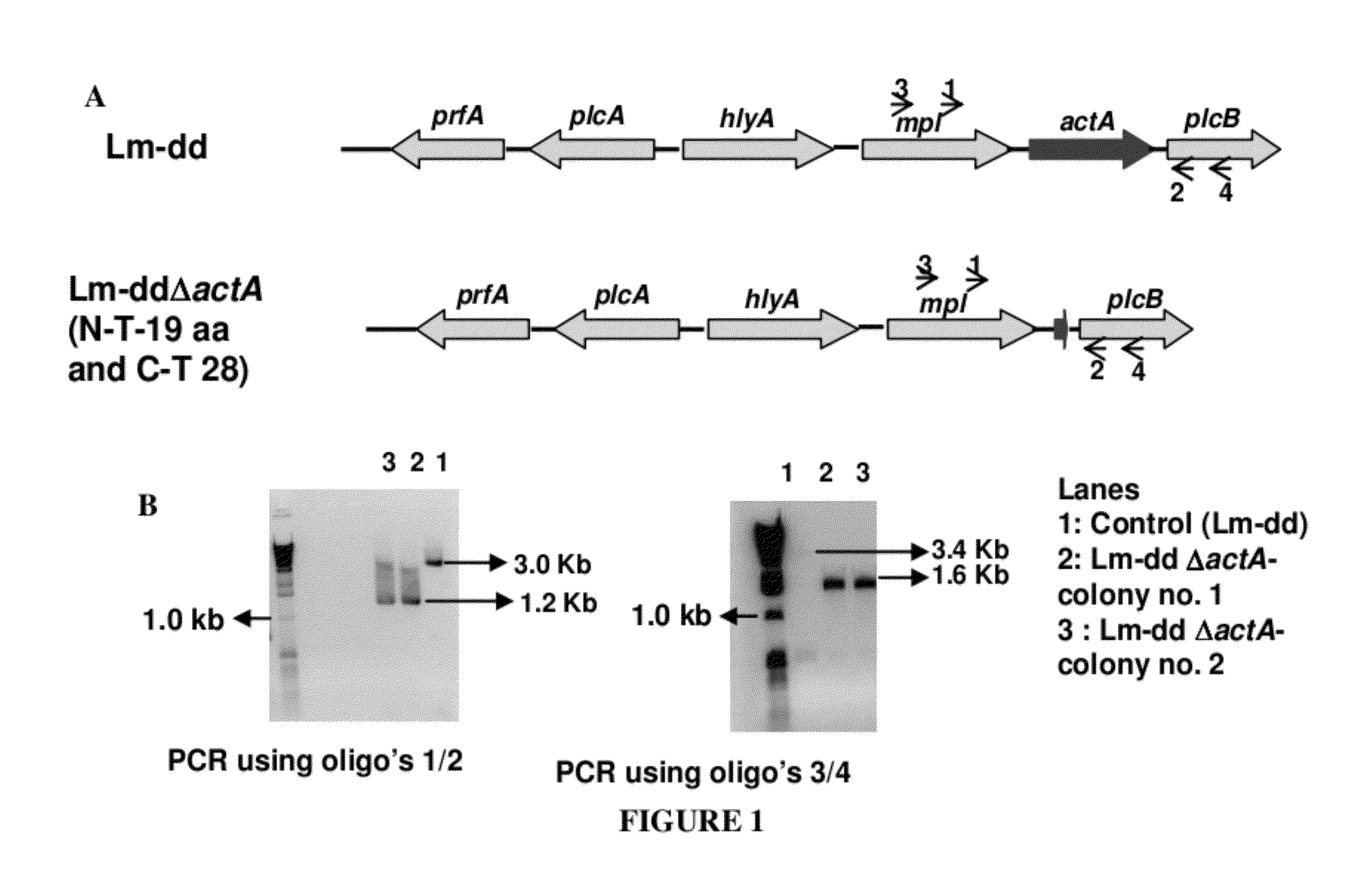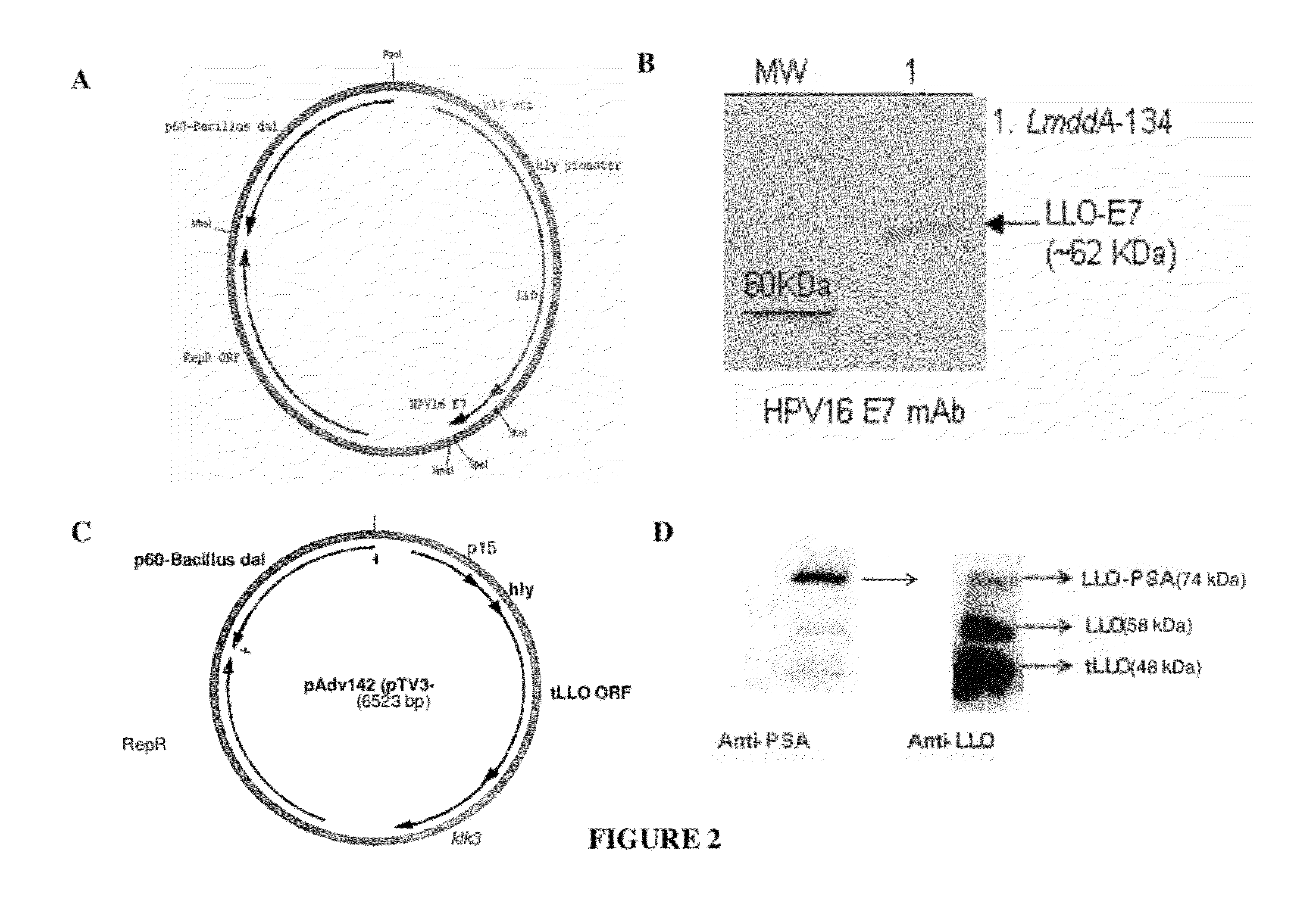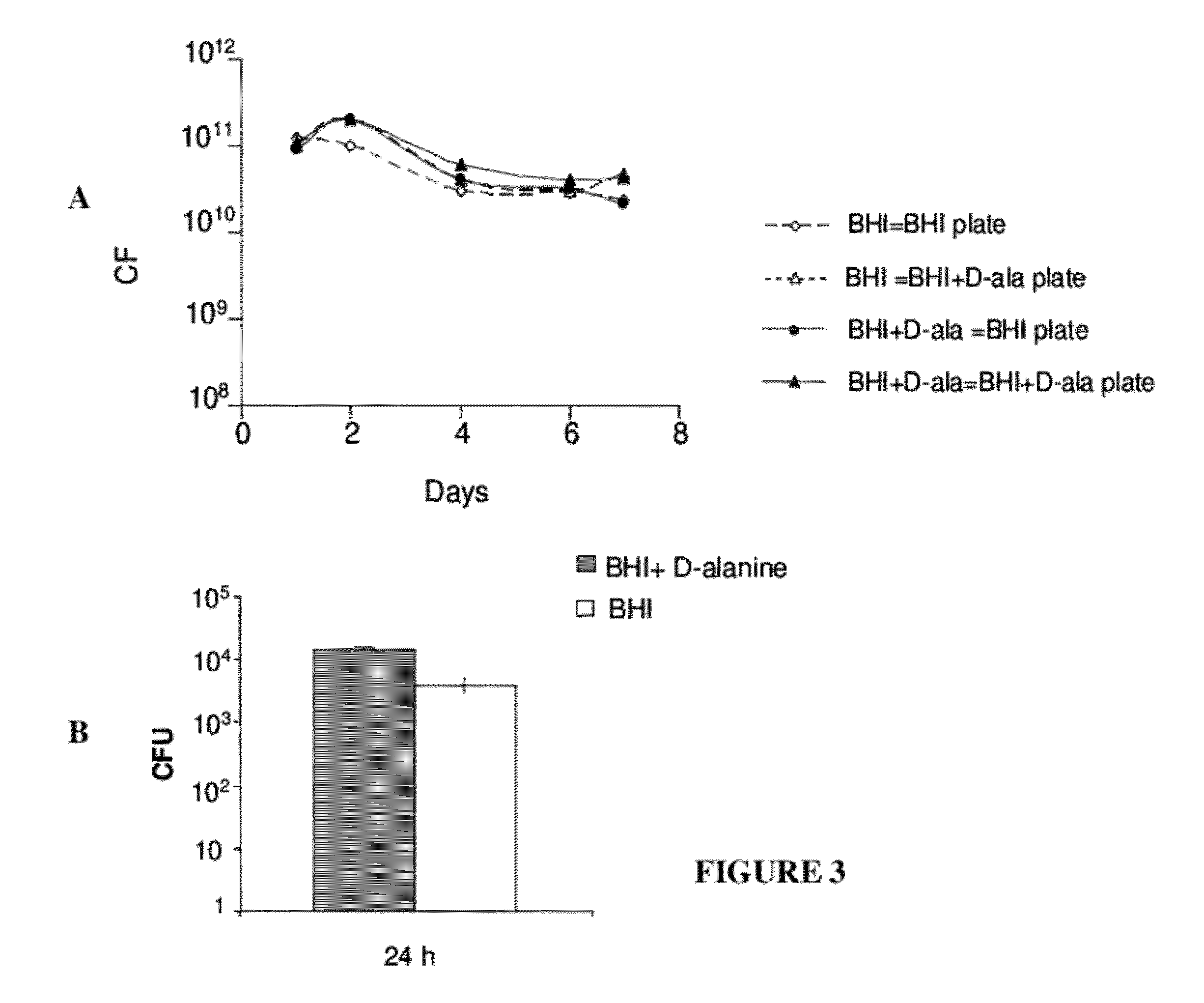Multiple delivery system for heterologous antigens
a multi-drug delivery and heterologous technology, applied in the field of episomal recombinant nucleic acid, can solve the problems of limited success against human cancer
- Summary
- Abstract
- Description
- Claims
- Application Information
AI Technical Summary
Benefits of technology
Problems solved by technology
Method used
Image
Examples
example 1
Construction of Attenuated Listeria Strain-LmddΔactA and Insertion of the Human klk3 Gene in Frame to the hly Gene in the Lmdd and Lmdda Strains
[0260]The strain Lm dal dat (Lmdd) was attenuated by the irreversible deletion of the virulence factor, ActA. An in-frame deletion of actA in the Lmdaldat (Lmdd) background was constructed to avoid any polar effects on the expression of downstream genes. The Lm dal datΔactA contains the first 19 amino acids at the N-terminal and 28 amino acid residues of the C-terminal with a deletion of 591 amino acids of ActA.
[0261]The actA deletion mutant was produced by amplifying the chromosomal region corresponding to the upstream (657 bp-oligo's Adv 271 / 272) and downstream (625 bp-oligo's Adv 273 / 274) portions of actA and joining by PCR. The sequence of the primers used for this amplification is given in the Table 2. The upstream and downstream DNA regions of actA were cloned in the pNEB193 at the EcoRI / PstI restriction site and from this plasmid, the...
example 2
Construction of the Antibiotic-Independent Episomal Expression System for Antigen Delivery by Lm Vectors
[0263]The antibiotic-independent episomal expression system for antigen delivery by Lm vectors (pAdv142) is the next generation of the antibiotic-free plasmid pTV3 (Verch et al., Infect Immun, 2004. 72 (11):6418-25, incorporated herein by reference). The gene for virulence gene transcription activator, prfA was deleted from pTV3 since Listeria strain Lmdd contains a copy of prfA gene in the chromosome. Additionally, the cassette for p60-Listeria dal at the NheI / PacI restriction site was replaced by p60-Bacillus subtilis dal resulting in plasmid pAdv134 (FIG. 2A). The similarity of the Listeria and Bacillus dal genes is ˜30%, virtually eliminating the chance of recombination between the plasmid and the remaining fragment of the dal gene in the Lmdd chromosome. The plasmid pAdv134 contained the antigen expression cassette tLLO-E7. The LmddA strain was transformed with the pADV134 pl...
example 3
In Vitro and In Vivo Stability of the Strain LmddA-LLO-PSA
[0266]The in vitro stability of the plasmid was examined by culturing the LmddA-LLO-PSA Listeria strain in the presence or absence of selective pressure for eight days. The selective pressure for the strain LmddA-LLO-PSA is D-alanine. Therefore, the strain LmddA-LLO-PSA was passaged in Brain-Heart Infusion (BHI) and BHI+100 μg / ml D-alanine. CFUs were determined for each day after plating on selective (BHI) and non-selective (BHI+D-alanine) medium. It was expected that a loss of plasmid will result in higher CFU after plating on non-selective medium (BHI+D-alanine). As depicted in FIG. 3A, there was no difference between the number of CFU in selective and non-selective medium. This suggests that the plasmid pAdv142 was stable for at least 50 generations, when the experiment was terminated.
[0267]Plasmid maintenance in vivo was determined by intravenous injection of 5×107 CFU LmddA-LLO-PSA, in C57BL / 6 mice. Viable bacteria were ...
PUM
| Property | Measurement | Unit |
|---|---|---|
| Electrical resistance | aaaaa | aaaaa |
| Nucleic acid sequence | aaaaa | aaaaa |
| Strain point | aaaaa | aaaaa |
Abstract
Description
Claims
Application Information
 Login to View More
Login to View More - R&D
- Intellectual Property
- Life Sciences
- Materials
- Tech Scout
- Unparalleled Data Quality
- Higher Quality Content
- 60% Fewer Hallucinations
Browse by: Latest US Patents, China's latest patents, Technical Efficacy Thesaurus, Application Domain, Technology Topic, Popular Technical Reports.
© 2025 PatSnap. All rights reserved.Legal|Privacy policy|Modern Slavery Act Transparency Statement|Sitemap|About US| Contact US: help@patsnap.com



